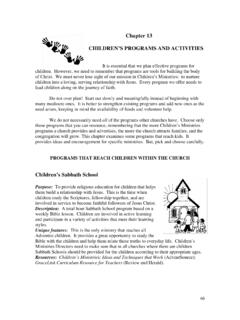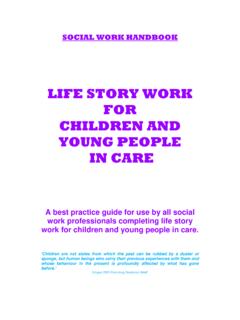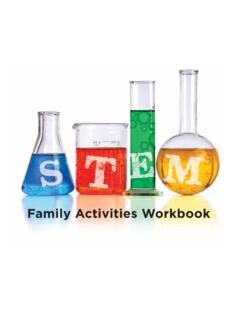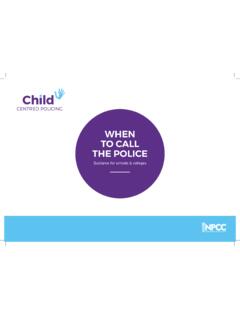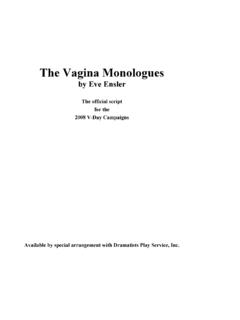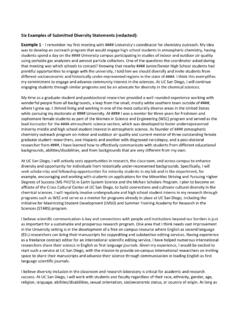Transcription of Faith Development of Children
1 Course # 3 Faith Development of Children (Lectures Notes) Luke s simple statement, And Jesus grew in wisdom and stature, (Luke 2:52, NIV) sums up Jesus Development through the ages and stages of childhood. Even more important, the statement clearly recognizes wisdom (mental) and stature (physical) as separate areas of Development . But Luke adds, and in favor with God and man, suggesting spiritual and social growth or Faith Development . John H. Westerhoff likens Faith to a tree trunk. The young trunk has few rings; older trunks have many. The rings of Faith growth occur as a result of life experiences and in interacting with others and with God.
2 Westerhoff identifies four main stages of Faith Development . 1. Experienced Faith The Key to experienced Faith in early childhood is observation and reaction. Children observe love and Faith in their interaction with adults and react to what they experience. At this stage, they are too young to consciously think about Faith , but they demonstrate unwavering Faith . The Needs at this stage are to experience trust, love, and acceptance. Little Children need a few trusted and loving adults in their lives. Sometimes pets provide the love and acceptance adults are too busy to give.
3 Foster Faith at this stage through warmth, hugs, active listening, and countless experiences of unconditional love. 2. Belonging Faith The Key to Faith for a primary-age child is a sense of belonging. Children of this age have a keen sense of the order of things. They are also great joiners. They want to belong to a church that is bigger than their family and to clubs within the church. The Needs for Children at this stage of Faith Development are: * A sense of authority. They are satisfied to have their why questions answered, because the Bible or because the Adventist Church says so.
4 * A sense of the community they belong to. Stories of God s working in Bible times and in the beginnings of their church feed the child s growing Faith . * Experiences of awe and wonder, which are partly what worship is about. * A sense of being wanted at church, being accepted by their teachers and peers, and are missed when absent. Foster Faith by filling the above needs through stories, drama, art, and creative worship experiences in a warm, accepting atmosphere. 1 3. Searching Faith The Key element of the adolescent s searching Faith is critical judgment.
5 For the pre-adolescent, quoting authorities is not enough. They want to examine all the information for themselves. The Needs at this stage of Faith Development are: * To establish their own identity. They are questioning and examining their beliefs, their lifestyle, their appearance, all authority, and anything they identify with, in an effort to define themselves. * To know that the religion of the head is equal to the religion of the heart. This compels kids to ask searching questions that challenge the adult s beliefs. They become critical of any explanations that cannot be supported by logic, good sense, and scientific inquiry.
6 Adults need to accept the questions without feeling threatened, working with the kids to find the answers. To be needed in the Faith community. Foster Faith in adolescents through serious Bible study, short-term journeys, mission trips and service opportunities. 4. Owned Faith The Keys to a lasting Faith for the adult are: conversion, witnessing, and discipleship. While conversion in pre-adolescence or childhood was real, the individual experiences it again in terms of a Faith that they have taken responsibility for and ownership of. The Needs in adulthood are to be an example, to find opportunities to witness by word and by lifestyle, and to help others put Faith to work.
7 Foster Faith through teaching opportunities and social action as well as by personal Bible study and prayer. How Children Think Let s take a look at how Children think at various stages and relate those patterns to their spiritual experience. Four stages of thinking, from birth through teen years, are briefly described with suggestions on how to instruct learners at each stage. The model is borrowed from Swiss developmental psychologist, Jean Piaget, who helped us understand how people think at various stages of cognitive Development . Labeling individuals for their stage of Development is not helpful.
8 Neither should one view one stage of Faith Development as being better or worse than another. Barbara Manspeaker Stage I Birth to two years 2 For the first two years of life a child s ability to understand is based on exploration of the world through the senses. The child learns about objects by placing them into the mouth, banging things together or dropping them on the floor. The child watches an object being moved about the room and notices if the object remains the same or is changed. Sitting up, crawling, walking, climbing and running are also means of discovery.
9 A Stage I thinker processes only what the senses focus on. When teaching Stage I Plan physical activities like walking to God s house or having a classroom nature walk. Give Children objects to touch. The objects should be large enough that they cannot swallow.. Vary activities by alternating action with quiet or listening activities. Provide a variety of materials and textures for the child to handle. Use familiar materials to attract their attention relate the object or experience to spiritual concepts, such as: God s love, creation, or their praise and thanksgiving.
10 Keep calm in every situation. Speak quietly; avoid hurry. Proceed at a child s pace. Model for them how to express their feelings to God. Show a variety of flowers, then pray, Jesus, we thank you for the flowers. They may try to repeat it with you! Give clear impressions by repeating stories in exact words. Use visuals and activities to focus their attention on the story. Speak of Jesus as a friend. Help the child feel confident of His love. Stage II Ages two to seven From the ages of two to seven, a child s thinking can operate independently from the body s senses.
